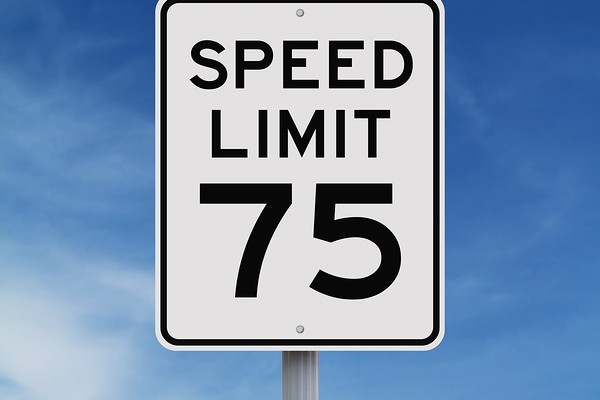
Legislators Seek To Raise Speed Limits
January 16, 2015
It’s that time of year again when state legislatures meet and bills to raise speed limits on interstates and state roads are introduced. Bills are being introduced in several states to raise the speed limit on interstates within the state’s borders up to 75 and even 80 mph. Apparently, the legislators who are pushing for these bills are pandering to constituents who want the speed limits raised without considering the danger posed by those speed limit increases.
In 2011, the State of Kansas increased speed limits to 75 mph on certain highways. According to Kansas Department of Transportation statistics, in the two years following the speed limit increase, the number of deaths on those Kansas highways where the speed limit was raised increased by 54 percent. Injury collisions also increased on those highways by 13 percent compared to the two years before the law change.
The Kansas statistics follow other studies that have found increases in the death rate after speed limits were raised. A 2009 study published in the American Journal of Public Health looked at the death rate on American highways after congress abolished the federal maximum speed limit in 1995. The study found an increase in the death rate of 3.2 percent on all roads, a 9.1 percent increase on rural interstates and a 4 percent increase on urban interstates. What that meant in real numbers were 12,545 deaths and 36,583 injuries that were directly attributed to the increase in speed limits.
In 2006, Iowa’s Department of Transportation conducted a study looking at the death rate in several mid-western states that had raised speed limits compared to states that didn’t. They found an overall fatality increase of nine percent in those states that raised the speed limit compared with a seven percent reduction in the states that hadn’t raised the speed limit.
Higher speed is a problem because it reduces a driver’s time to react to an emergency on the road. Higher speeds also make it more difficult to keep a car on the road on curves or when trying to avoid a crash. Higher speeds also increase the crash forces exponentially. When comparing a crash with a car hitting a stationary object at 70 mph vs the same crash at 75 mph, the difference between 70 and 75 mph represents an increase in speed of only seven percent but an increase of 14 percent in crash forces. According to figures from the National Highway Traffic Safety Administration (NHTSA), speed was responsible for approximately one-third of all highway deaths in 2012.
Some legislators maintain that increased speed limits allow goods to travel to markets faster, saving money and creating a business friendly environment. According to a May 2014 report by NHTSA, crashes involving a speeding vehicle traveling over the posted limit or too fast for conditions cost the nation $59 billion in 2010, an average of $191 for every person in the U.S.
In last year’s legislative session, the Florida legislature passed a bill that would have increased the speed limit on certain Florida highways to 75 mph but after protests from the Florida highway patrol, other law enforcement agencies, and safety experts, the governor vetoed the bill.
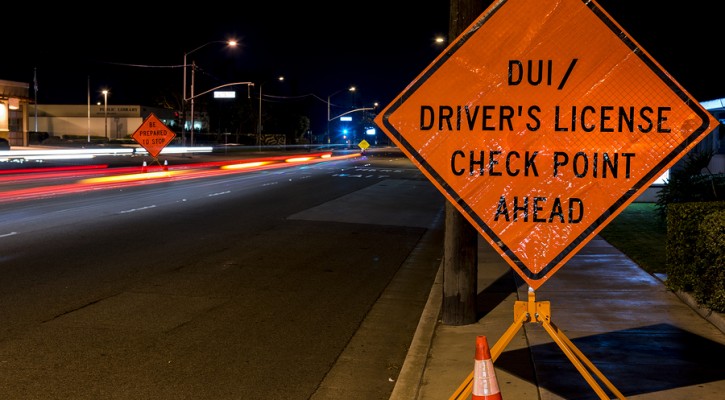
Strong DUI Enforcement Practices Reduce Drunk Driving
January 13, 2015
Communities that engage in strong DUI enforcement practices have fewer drunk drivers on the road than communities without such strong measures. This finding is according to a study conducted by the Pacific Institute for Research and Evaluation (PIRE) and published in the journal Alcoholism: Clinical and Experimental Research.
While education efforts about the dangers of drunk driving by organizations such as Mothers Against Drunk Driving (MADD) have been successful in raising awareness of the issue and reducing the number of DUI related deaths over the past 30 years, drunk driving is still a major problem on American roads. Drunk driving remains responsible for approximately one-third of all traffic deaths in the US each year and deaths in alcohol related crashes actually increased by 4.6 percent from 9,865 in 2011 to 10,322 in 2012 according to the National Highway Traffic Safety Administration. According to a 2010 study conducted by the Centers for Disease Control and Prevention (CDC), there are approximately 300,000 incidents of drinking and driving on America’s roads each day.
Researchers in the PIRE study compared communities with strong DUI enforcement policies with communities that had fewer DUI arrests. Among their findings:
- Drivers on the roads in communities who were exposed to fewer than 228 traffic stops per 10,000 population aged 18 and older had 3.8 times the odds of driving with a BAC of 0.08 or higher compared to those drivers on the roads in communities with more than 1,275 traffic stops per 10,000 population.
- Drivers on the roads in communities with fewer than 3.7 driving under the influence (DUI) arrests per 10,000 population had 2.7 times the odds of BAC-positive drivers on the roads compared to communities with the highest intensity of DUI arrest activity.
The study’s authors concluded that once the local population realizes that police are using DUI checkpoints and other strong DUI enforcement tactics, the number of people willing to risk driving drunk goes down significantly.
Unless they have received specific grants from state or federal sources, police departments are reluctant to direct valuable resources toward DUI enforcement but previous PIRE studies show a huge return in investment for DUI enforcement. According to a PIRE study on impaired driving in Florida;
- Using undercover police officers to enforce Florida’s law against serving alcohol to intoxicated bar and restaurant patrons would reduce alcohol-related crash fatalities by an estimated 11%. It would cost $0.50 per licensed driver and save $40 per licensed driver.
- Intensive enforcement of Florida’s BAC limit with highly visible sobriety checkpoints would reduce alcohol-related fatalities by at least 8% and save $112,400 per checkpoint. Including costs of travel delay and the value of mobility losses by impaired drivers apprehended and sanctioned, the costs of conducting a checkpoint would average $15,900 including police resources.
The Chattanooga, TN police department has a dedicated squad of three officers and a sergeant who work full time in DUI enforcement. Through creative tactics and by gaining the trust and support of bar owners, they’ve been able to reduce the number of DUI related traffic fatalities in Chattanooga by sixty percent; all while DUI related deaths in nearby regions have risen over the last year. An unexpected benefit is that taxi service in the city has almost tripled.
Other methods under consideration or already enacted in some states that have been shown to lower the incidents of drunk driving include:
- Alcohol detection interlocks in vehicles for first time DUI offenders.
- Lowering the legal limit for DUI from .08 BAC to .05 (Most European nations have adopted the .05 or lower BAC limits.)
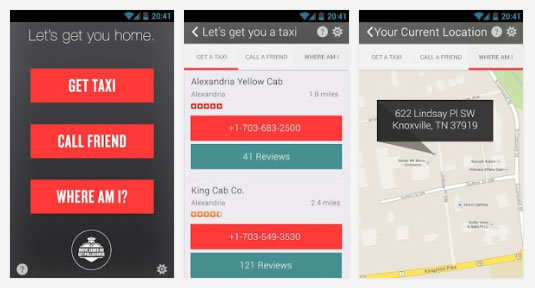
Feds Introduce App To Prevent Drunk Driving
December 19, 2014
In the ongoing effort to prevent drunk driving, the federal government has introduced a new cellphone app. Called “SaferRide”, the app was released by the National Highway Transportation Safety Administration (NHTSA), and is now available for download.
Unlike the ENDUI app released by the State of Maryland, this app doesn’t try to estimate your BAC level or offer reaction testing games. Instead, for anyone who drinks and needs a safe ride home, the app will locate and call a taxi service close to their current location. It can also contain a list of designated driver phone numbers that the user pre-programmed into the app. Continue Reading
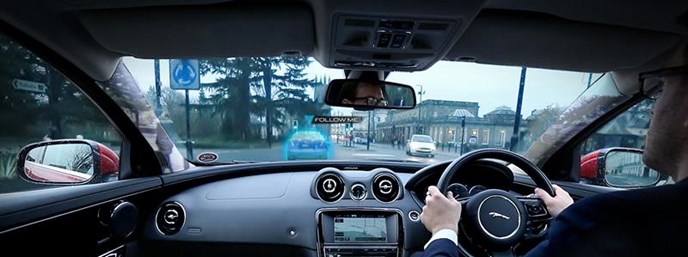
Jaguar Land Rover Proposes Invisible Pillars and Ghost Cars
December 18, 2014
Invisible pillars and ghost cars are a couple of new technologies to make driving safer that are being proposed by Jaguar Land Rover researchers.
Invisible Pillars
To make cars safer and strengthen the roof, pillars between the car’s body and roof had to be widened in order to make them stronger. The problem with that is that, when making turns or checking blind spots, the pillars block the driver’s view of the area around the car. Continue Reading

Drugged Driving Increasing But Hard To Prove
November 25, 2014
The increase in instances of drugged driving has law enforcement and state officials worried throughout the country. With more states either legalizing or decriminalizing marijuana use, police are seeing more instances of drivers under the influence of marijuana. The problem is that it’s hard to prove under many state laws. Continue Reading
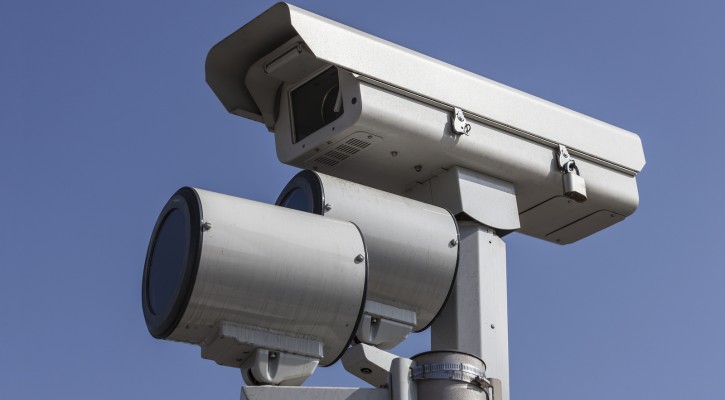
Crashes Increase After Red Light Cameras Are Removed
November 24, 2014
A recent report by WBBH TV in Florida shows that crashes increased at intersections after red light cameras were removed. The Collier County, FL board of commissioners voted in 2013 to remove red light cameras saying there was no proof they made the streets safer. In their report, WBBC compared crash data during the 18 months after the cameras were removed to crash data for the 47 months the cameras were in use. The results showed that, on average, there were ten more crashes per month after the cameras were removed than when they were there. Continue Reading
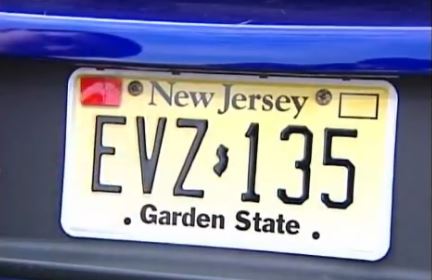
A Single Statistic: Red Decals For Teen Drivers
November 17, 2014
Do red decals for teen drivers work to save lives? A recent study shows that understanding a single statistic can change the public’s attitude on the need for safe driving laws. With that in mind, we are posting a series of single statistics on a variety of traffic safety issues. Many lawmakers are reluctant to enact driving safety laws because they feel – rightly or wrongly – that the public doesn’t support such reforms. If your state legislature is debating a traffic safety issue, it’s hoped that this single statistic will provide the public with the knowledge needed to make informed decisions that they can then share with their representatives. Continue Reading
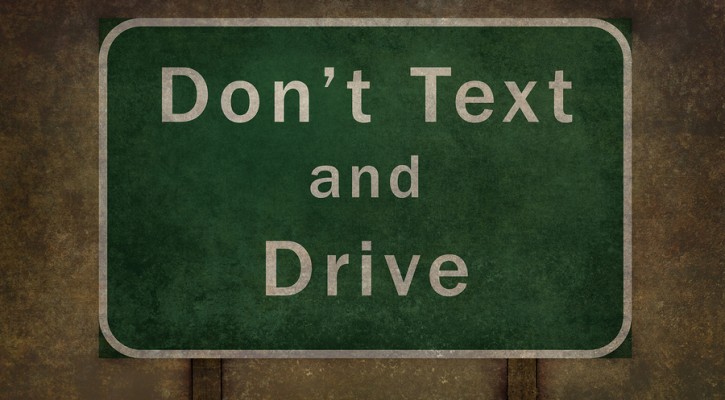
New York Enacts Stricter Anti Texting Law
November 5, 2014
A New York anti texting law that went into effect on the first of November carries some of the stiffest penalties in the nation, including license suspensions.
For young drivers subject to New York’s Graduated Driver License (GDL) laws who are caught texting while driving the penalties include:
- A mandatory 120-day driver license or permit suspension.
- For a second texting while driving conviction within six months, the license or permit will be revoked for at least one year.
For all drivers guilty of texting or using a cell phone while driving, the fines have increased to:
- $200 for a first conviction.
- $250 for a second conviction within 18 months.
- $450 for a third or subsequent conviction within 18 months.
In addition to the fines and suspensions, a conviction of using a cell phone or texting will result in five violator points on the driving record and a surcharge of up to $93.

Extending Graduated Driving Laws Beyond Age 17
November 3, 2014
Should state legislatures consider extending graduated driving laws beyond age 17? According to a recent study by the AAA Foundation for Traffic Safety, in spite of the fact that many teens are delaying getting a license until they are older, novice drivers could benefit from graduated driving laws (GDL), even if they are older than age 18.
By looking at teen crash statistics in two states where GDL laws apply only to 16 and 17 year olds and comparing them to the State of New Jersey, where GDL laws apply to all drivers up to the age of 21, AAA feels the data shows that state legislatures should consider extending graduated driving laws, at least for the first six months, for all novice drivers under the age of 21.
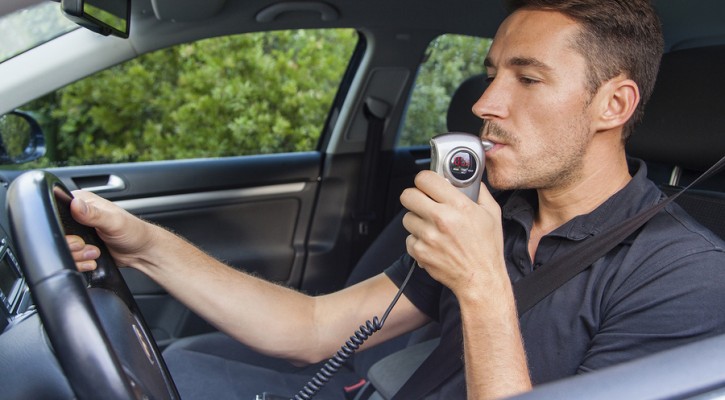
A Single Statistic: Ignition Interlocks
October 14, 2014
Do ignition interlocks prevent drunk driving for first time offenders? A recent study shows that understanding a single statistic can change the public’s attitude on the need for safe driving laws. With that in mind, we are posting a series of single statistics on a variety of traffic safety issues. Many lawmakers are reluctant to enact driving safety laws because they feel – rightly or wrongly – that the public doesn’t support such reforms. If your state legislature is debating a traffic safety issue, it’s hoped that this single statistic will provide the public with the knowledge needed to make informed decisions that they can then share with their representatives.
The Issue: Requiring ignition interlocks for all offenders
Should all states require that an ignition interlock device (IID) be installed on all vehicles driven by a person convicted of DUI, even for a first offense? Twenty two states currently have laws requiring that an ignition interlock device be installed for all driving under the influence (DUI) offenders. Organizations such as Mothers Against Drunk Driving (MADD) are urging all states to pass laws requiring ignition interlocks for all DUI offenders. Both MADD and the National Highway Traffic Safety Administration (NHTSA) have proposed model guidelines to encourage all states to pass laws requiring IIDs for all first time offenders.
The Risks:
According to NHTSA, 10,322 people were killed in alcohol-impaired-driving crashes in 2012. These alcohol- impaired-driving fatalities accounted for 31 percent of the total motor vehicle traffic fatalities in the United States. Traffic fatalities in alcohol-impaired-driving crashes increased by 4.6 percent from 9,865 in 2011 to 10,322 in 2012. It’s estimated that one out of three drivers will be involved in an alcohol related crash at some point in their life.
The Single Statistic:
Previous NHTSA research of convicted drunk drivers show that those with interlocks installed are 75 percent less likely to repeat the behavior compared to those who do not.
Find your representative:
If you wish to share your thoughts on this issue with your state representatives, you can find their contact information by visiting: Find Your State Legislator – Open States
